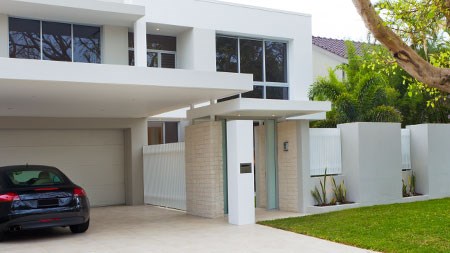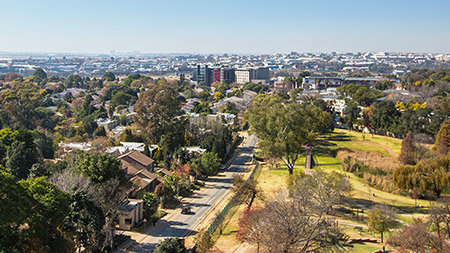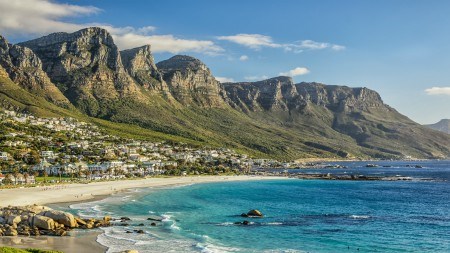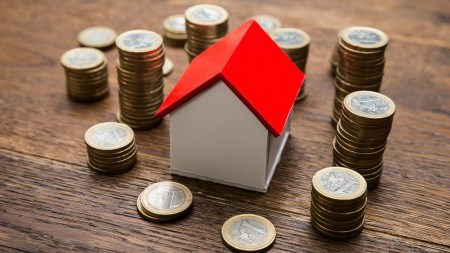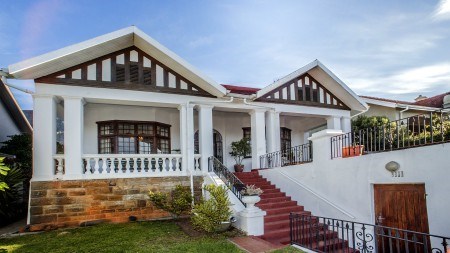In tough economic conditions last year, most suburbs in the traditionally strong Sandton market showed a decline in sales and house price growth. A few suburbs did however buck that trend.
Most real estate professionals agree that 2017 was one the toughest years to date; an eminently challenging 12 months that subdued even the strongest markets - including the country’s economic powerhouse of Sandton.
Deeds office figures comparing 2016 and 2017 sales are revealing, according to Lew Geffen, Chairman of Lew Geffen Sotheby’s International Realty, who says the very same challenges also afforded a few of Sandton’s less prominent suburbs an opportunity to rise to the occasion and show their mettle.
“An analysis of the 2016 and 2017 figures shows that while the majority of Sandton’s 39 sub-suburbs reacted predictably to the progressively repressive conditions that intensified last year, a handful of exceptions weathered the storm with encouraging resilience. “The dominant trend in 2017 was a decline in sales volumes and price growth, more than half of the suburbs with sectional title sectors experienced at least marginal growth and a handful saw their housing markets fare best, but only seven suburbs experienced growth in both sectors.
The suburbs that showed growth
“River Club proved to be one of the most consistent markets, with steady increases in both sales volumes and pricing across the board. Last year, house sales in River Club spiked by 45% from 33 in 2016 to 48 with a respectable 13% increase in the average sale price, from R3.72m to R4.22m. Apartment transactions rose from 33 to 44 with 9% growth nudging the average selling price up from R1.92m to R2.09m. “During the same period, house sales and sale prices in Sandown and Rivonia continued their steady upward trajectory with 29% and 33% increases in sales and 22% and 9% price growth respectively. “In Sandown 18 houses averaging R5.29m changed hands compared to 14 sales at R4.35m in 2016 and house sales in Rivonia rose from 15 to 20 with the 2016 average sale price of R2.88m increasing toR3.16m.” Geffen adds that although both suburbs saw a slowing in apartment sales, the sectional title sectors were bolstered by significant growth in average sale prices.
“Last year Sandown saw apartments sales drop by 33% while 31% growth bumped the average sale price from R1.84m to R2.41m and in Rivonia the average selling price almost doubled, soaring from R699 499 to R1.36m, which amply compensated for the 17% dip in sales.” The highest price growth in 2017 was in Gallo Manor where 38 sales achieved an average sale price of R2.75m, 24% more than R2.21m realised by 34 transactions in 2016.
Geffen attributes the solid performance of these suburbs to a number of factors, most notably the ongoing growth of the commercial market in Sandton which has precipitated a steady influx of people seeking accommodation closer to work.
“First-time buyers remain a key driving forceand their growing influence is apparent when one looks at Sandton’s top performing sectional title markets.
“At the entry level, Paulshof and Woodmead continued to offer solid returns with 25% and 24% growth in average selling prices and in the mid-market, Khyber Rock held its own with apartment prices increasing by 24%.”
The prospects for 2018
According to ooba, South Africa’s largest mortgage originator, the average age of first time buyers is 34. And when one factors in 2016 census data that reveals around two thirds of South Africa’s population is now below the age of 35 and half are younger than 25, we can expect demand from first time buyers to increase considerably.
Geffen cautions that, in general, Sandton’s freehold sector will recover at a slower pace than the sectional title market for a number of reasons, including the fact that these homes are pricier and it will take a while for consumers to bounce back from the financial doldrums of the last two years.
“And, although there has been an encouraging revival in investor confidence and a notable increase in market activity, many buyers are still wary of investing large sums in fixed assets in South Africa which has continued to temper the upper end of the market.
“However, Johannesburg’s wealthiest suburb proved the exception – and its mettle - with a remarkable rebound this year. According to Lightstone data, after Sandhurst’s median house price tumbled by almost 40% last year, dropping to R12.5m after a record high of R20.5m, it quickly recovered during the first four months of the year, jumping by 19.8% to R14.98m by the end of April.
He concludes: “Although we are not out of the woods yet, the tide is definitely turning. Ooba reports that in the first quarter of 2018 they recorded their highest home loan approval rate recorded in over ten years while the average deposit declined by6.4% year-on-year.”
View more of the neighbourhood here:
